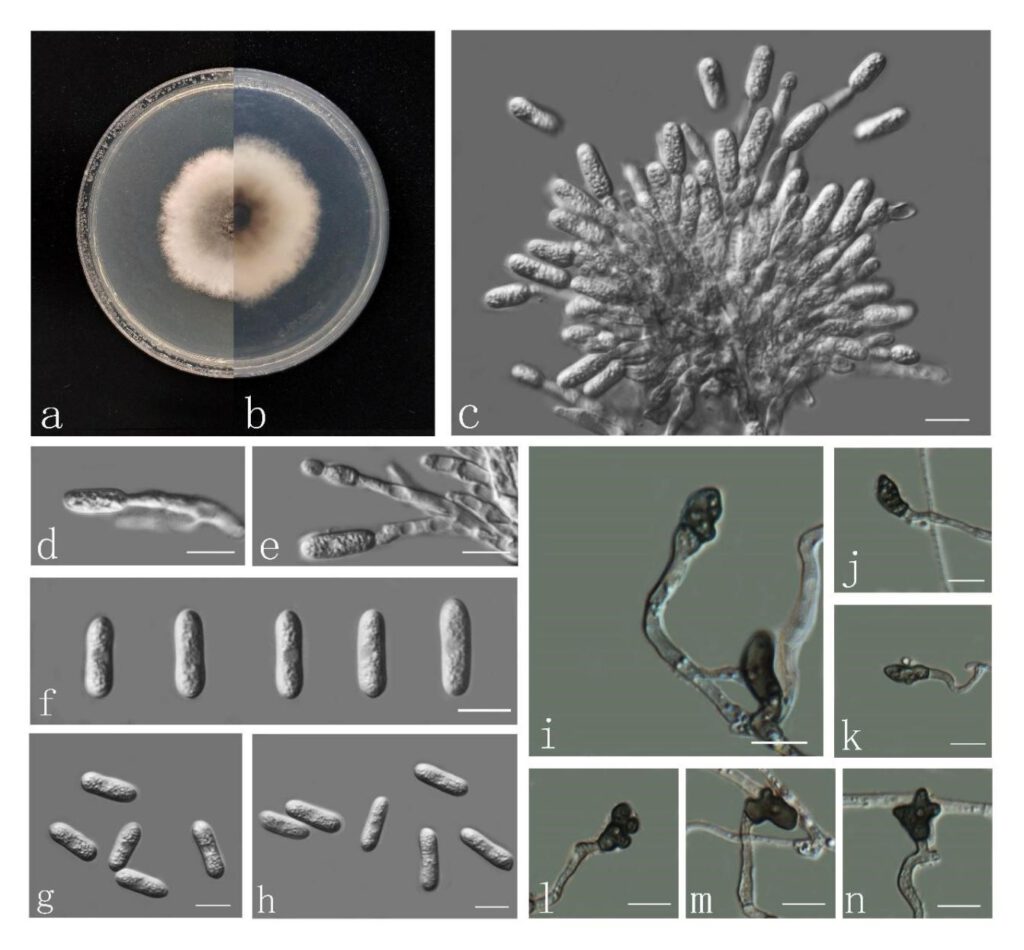Colletotrichum syzygicola Udayanga, Manamgoda & K.D. Hyde [as ‘syzygicola’], in Udayanga, Manamgoda, Liu, Chukeatirote & Hyde, Fungal Diversity61: 173 (2013)
Index Fungorum number: IF 545019; Facesoffungi number: FoF00015;
Associated with leaf spot of Cymbidium sp. Sexual morph: Not observed. Asexual morph: Conidia 14–19 × 4–7 μm (ave. 17 × 5 μm, n=50), no septum, most rounded at both ends, cylindrical, some rounded at the end, curved at the end. Conidia formed from conidiophores, unbranched. Appressoria often becoming complex with age, some rhomboid, 11–17 × 5–7 μm(ave. 13 × 6 μm, n=30) long, some quincunx, 10–16 × 7–12 μm (x̅ 12 × 9 μm, n=30) long, dark brown.
Culture characteristics – Colonies on PDA attaining 60.00 diam. in 7 days at 25 ℃, the growth rate per day 4.59 ± 0.5mm/d (n=4), at first white, becoming greyish brown, in reverse dark brown and then edge with white. Aerial mycelium greyish brown at the centre, dense, cottony, without setae and sclerotium produced.
Material examined – China, Guangdong province, Shenzhen Botanical Garden, 30th November 2020, J.W. Chen, Z.H. Zhang and C. Chen (new host record) (dried cultures ZHKU 21-0078 and ZHJU 21-0079) and living cultures ZHKUCC 21-0085 and ZHJUCC 21-0086.
Notes – The isolate in this study is phylogenetically closely related to Colletotrichum syzygicola with moderate support (73% in ML, 79% in MP) (Fig. 1). The morphological characteristics are similar to C. syzygicola described by Udayanga et al. (2013).

Fig 1. Colletotrichum syzygicola (ZHKUCC 21-0085: New host record) a, b. Upper and reverse view on PDA after seven days. c Conidiomata and conidiogenus cells. d, e Conidiogenus cells with developing conidia. f–h Conidia. i–n Appressoria Scale bars: c–n = 10 µm.
